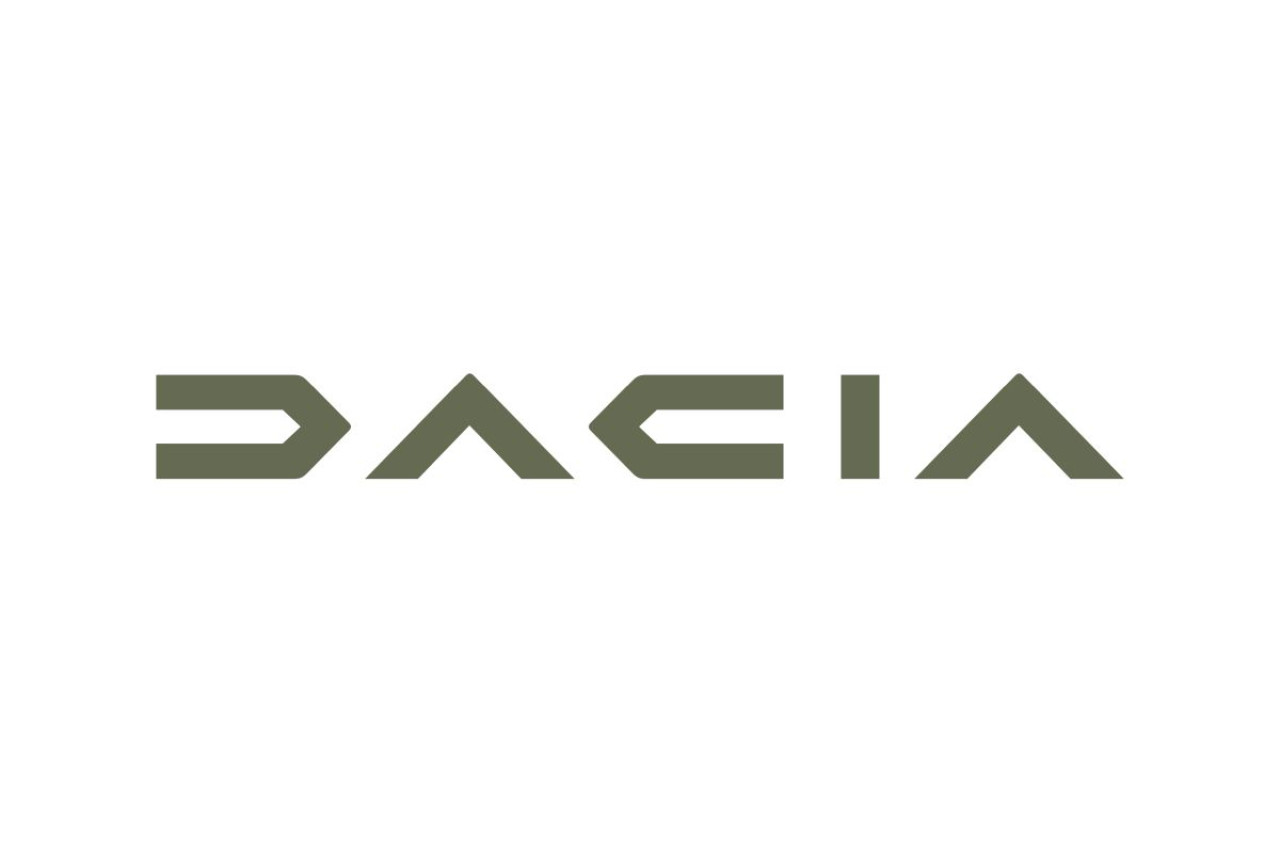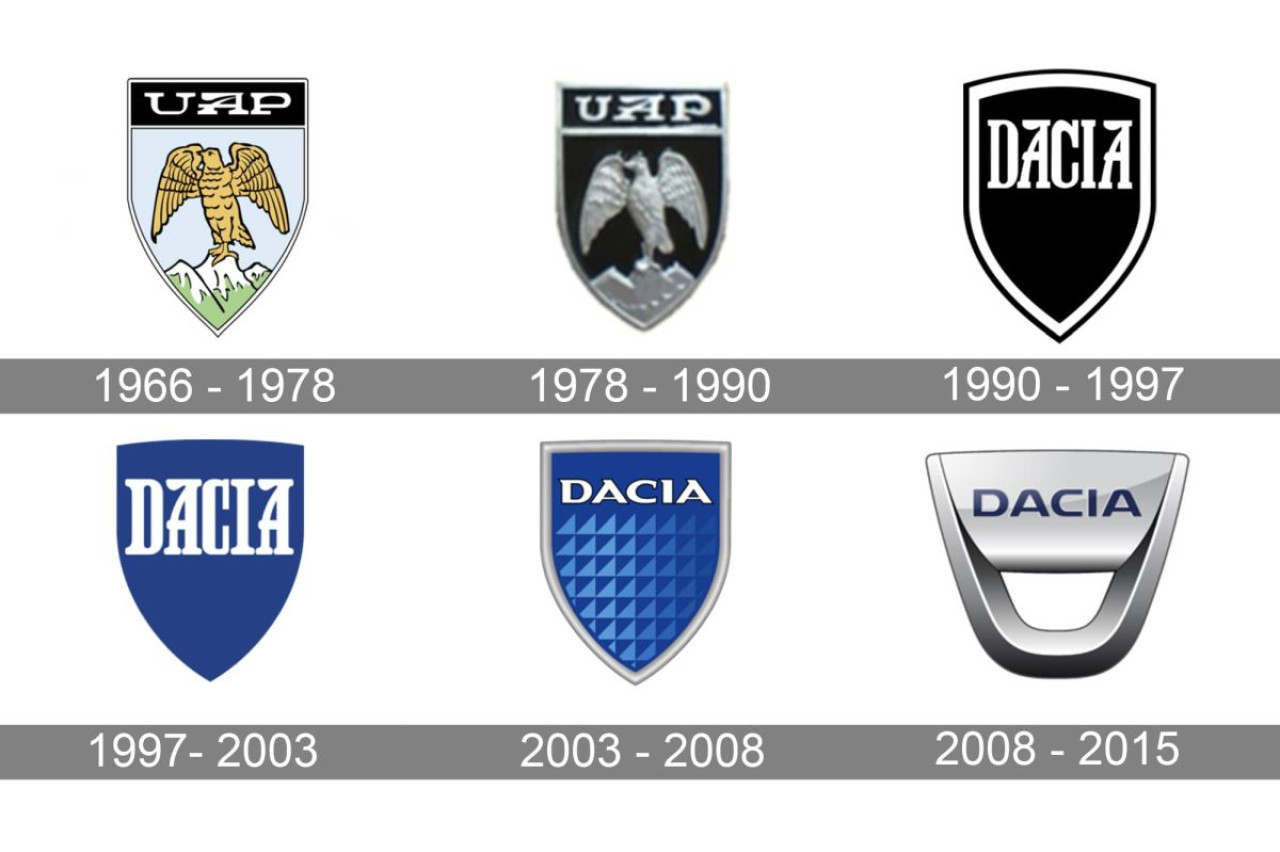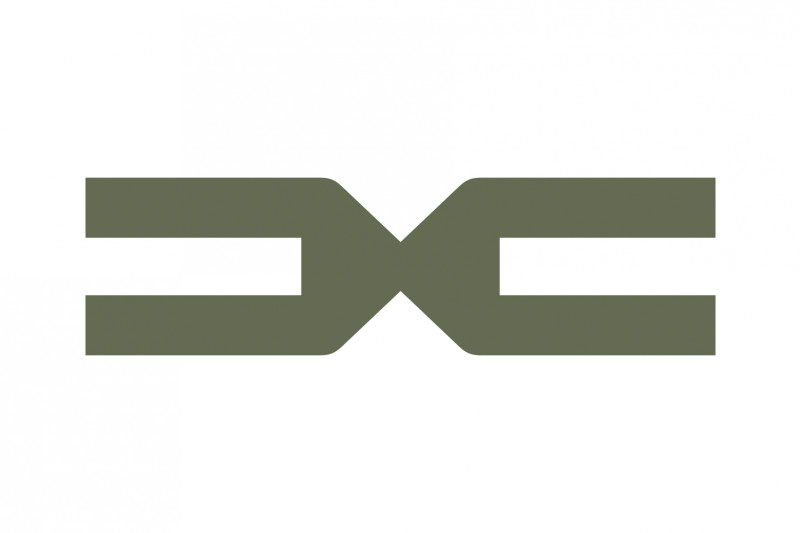Dacia has only been around since 1966, yet it received its ninth logo earlier this year. The brand image evolved from a militaristic-looking coat of arms with an eagle to tightly stylized letters with a vague description.

Cold War or not, after the Second World War, some Western European car brands did not hesitate to grant production licenses to manufacturers behind the Iron Curtain. Fiat is especially active in this area, of which the Ladas based on the Fiat 124 are the clearest examples. In addition, the Italians conclude agreements in Poland (FSO) and the former Yugoslavia (Zastava).
Renault, in turn, signs a contract with the Romanian state-owned company Uzina de Autoturisme Piteşti (Car Factory Piteşti). That builds the Renault 8 for a short time, and soon the Romanians are also allowed to produce the then brand-new R12 for the local market: the Dacia 1300. Of course, the Renault wybertje does not adorn the nose. Instead, the Dacia has a coat of arms with a difficult-looking eagle perched on a mountaintop. Above it floats the abbreviation of the factory name. The car is also on the Dutch and Belgian market, but without much success.

The Dacia Logan is also successful in Western Europe
After several facelifts, the Dacia 1300 evolves into the slightly more streamlined 1310. The logo undergoes a similar treatment and is stripped of its colors. After the brutal ouster of Romanian dictator Nicolae Ceausescu, the elderly Dacia 1310 is joined by the 1325 Liberta (Freedom). The post-communist model still uses the old R12 technology, hidden under a new hatchback body. The Nova, SuperNova and Solenza will follow later, but they hardly cross national borders. In the meantime, the logo is also being modernized. The eagle and the old factory name are leaving the field and against a black background only the brand name is left. The shape of the coat of arms has not been changed and it remains intact even with the 1997 update.
In 2003, the new brand emblem marks the turning point brought about by the introduction of the Logan. The sober sedan looks fairly modern and uses fairly current Renault technology. In the grille it carries a blue logo with a checkered pattern and the brand name has been given a more contemporary font. After the arrival of the super-spacious MCV version, the Logan has also achieved success in Western Europe, and Dacia sees opportunities for a second model.


The ‘bottle opener’ makes way for the ‘spanner’
The introduction of the compact Sandero in 2008 is a good reason to open a beer. This is reflected in the new brand logo, which looks suspiciously like a bottle opener. Dacia continues to grow, especially after the arrival of the tough Duster in 2010. And when the Romanians also start using modern turbo engines from Renault, the number of ‘Daciasts’ continues to increase.
After a limited interim update in 2015, the ‘bottle opener’ will continue to grace the Dacia noses, until earlier this year. We have barely greeted the unprecedented fresh-looking, new Sandero and Duster when Dacia comes with a completely new brand emblem. Nothing wrong with that, just a shame that Dacia seems to be losing its no-nonsense image at the same time. We are bombarded with unparalleled marketing gossip: “The graphics have been deliberately reduced to remind us that Dacia is a brand that focuses on the essentials. Each individual part blends with the other parts to form a cohesive whole. The decal gives the essence of the logo by bringing the D and the C together, like links of a chain that are linked together.” Sorry, but we’re giving up…